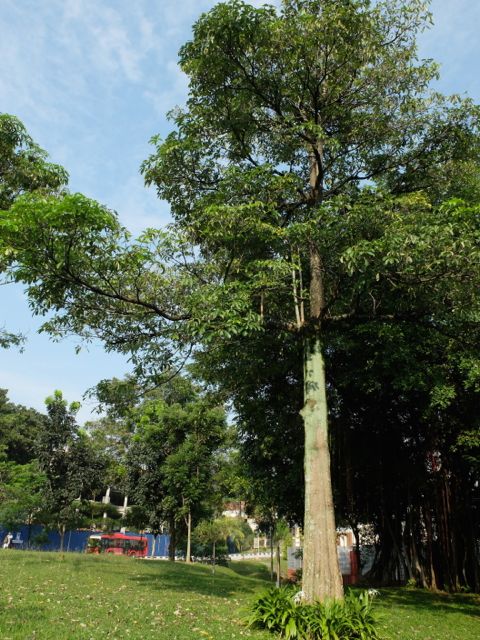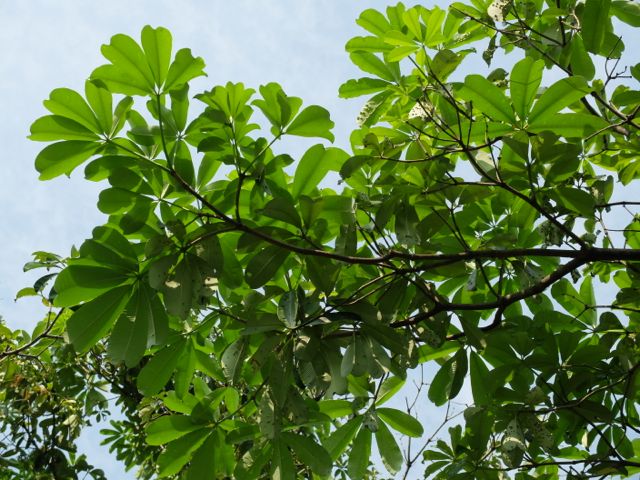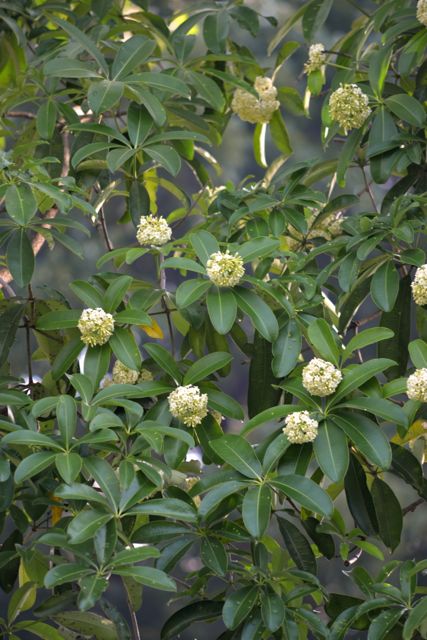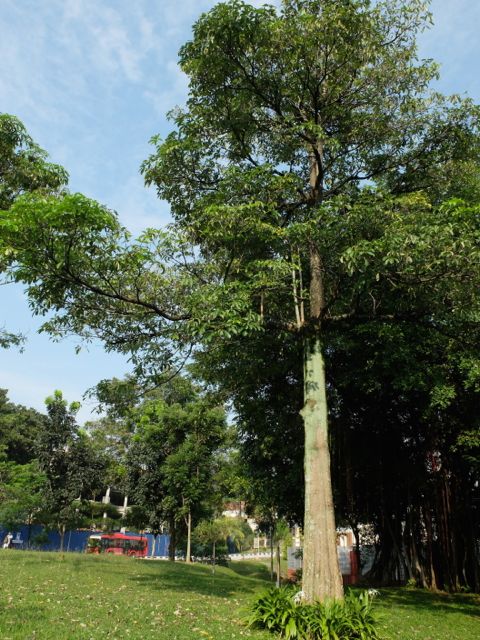
About This Tree
APOCYNACEAE (Plumeria & Allamanda family)
The pulai is a magnificent tree. A self-sown pioneer species, it is considered “long-lived” as it is often found even in more mature forest stands. It can grow up to 40 metres in height and it is a fast-growing species. Pulai trunk has dark grey and smooth bark but may get flaky in older trees. The dark green leaves occur in whorl of four to nine leaflets that are somewhat leathery and glossy. Broken leaf parts and other parts of this tree leak out white latex. It usually flowers around October, producing clusters of three to eight flowers. The flowers are fragrant and white to creamy coloured. Its fruits develop as a pair of pods that are smooth, covered with brown hairs, and contain many seeds. Its dark brown, wind-dispersed seeds are smooth, oblong and flat.

It grows in primary and secondary forests, in swamps, on hills, loam or sandy soils up to 200 metres altitude. It tolerates a wide variety of soils and is distributed along Peninsular Malaysia, Sumatra, Java, Borneo and the Philippines.

Common Uses
Pulai timber is suitable to be made into pencils, matches, tea chests, crates, plywood and carpentry. It is generally believed that the white latex from the bark can be applied medicinally to relieve abscesses and boils and also to make ingredients for chewing gums. An extract of the pounded bark is an ingredient of febrifuges and vermifuges. In Thailand, the latex is used to soothe toothache. The wood is used as pulai.
Interesting Facts!
- It is the preferred local food plant for caterpillars of the moths, Daphnis hypothous, and Parotis marginata. Its flowers are also insect-pollinated.
- Wasps can be seen growing in the leaves of pulai, by inducing cancerous cells to emerge to make homes for larvae.
- There are several individuals of Alstonia angustiloba listed as Heritage Trees in Singapore. They are found all over Singapore.
- Latin Alstonia, commemorates Dr. Charles Alston (1685–1760), a professor of botany at Edinburgh University.
References:
https://florafaunaweb.nparks.gov.sg/Special-Pages/plant-detail.aspx?id=2704
http://tropical.theferns.info/viewtropical.php?id=Alstonia+angustiloba
http://lkcnhm.nus.edu.sg/dna/organisms/details/340
http://www.asianplant.net/Apocynaceae/Alstonia_angustiloba.htm
Want to know more? (More contents coming soon!)
